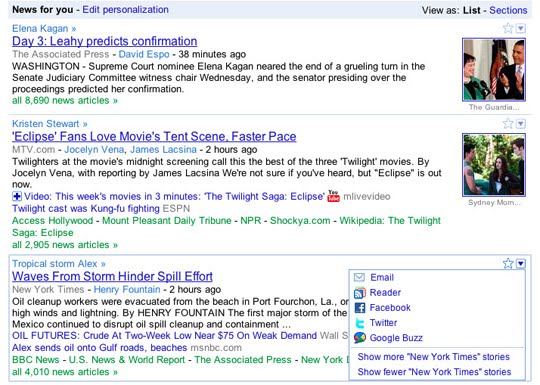Wednesday, September 22, 2010 8:02 AM
Today we celebrate the eighth birthday of Google News. Not long after the tragic events of September 11, 2001, we started building and testing Google News with the aim of helping you find current events from a wide variety of global and political perspectives. On September 22, 2002, Google News rolled out to all English-language readers, with a dedicated News tab on Google.com.

Over the years we’ve made thousands of changes to deliver more news to more users—faster, and with enhanced customization, sharing and serendipity. We’ve added video, local news, custom sections, scanned newspaper archives and a redesigned homepage. We’ve grown from 4,000 sources to more than 50,000, and from one English edition to 72 editions in 30 languages.
We’d like to take this opportunity to thank our loyal users and the news publishers working hard to keep you informed. Thousands of stories are made more discoverable through Google News each day. Based on the number of articles indexed by Google News, here are the largest news stories from each of the last eight years:
- 2003: Iraq War begins with the invasion of Iraq by the U.S. and allied forces
- 2004: George W. Bush defeats Senator John Kerry in U.S. Presidential election
- 2005: Hurricane Katrina strikes U.S. Gulf Coast
- 2006: Democrats take Congress and Nancy Pelosi becomes first female speaker of the House
- 2007: Former Pakistani Prime Minister Benazir Bhutto is assassinated
- 2008: Barack Obama elected 44th president of the United States
- 2009: Death of Michael Jackson
- 2010 (to date): 7.0-magnitude earthquake occurs in Haiti
This year, as we blow out our candles we’ll make one wish: that we serve you—our users and publishing partners—better than ever before in the years to come.





